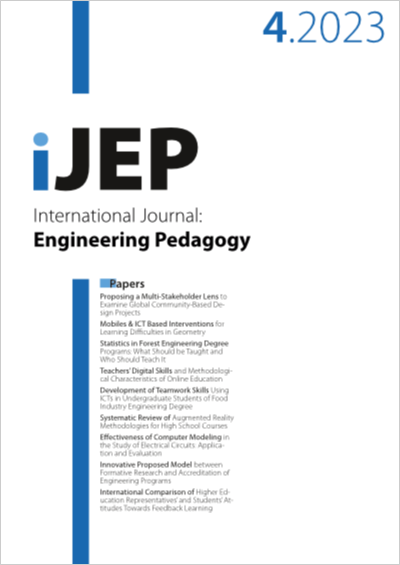Proposing a Multi-Stakeholder Lens to Examine Global Community-Based Design Projects
DOI:
https://doi.org/10.3991/ijep.v13i4.38477Keywords:
Case study, Educational toy, Service-Learning, Design, Stakeholders, Evaluation toolAbstract
One implementation of global, community-based, engineering-student design projects invites students to practice design from a distance. Though it may not be possible to bring an entire engineering design class to the international location for students and various stakeholders to interact, a meaningful global experience can be educational and beneficial for all stakeholders. Recognizing that the impact of community-based projects extends beyond the students to numerous stakeholders, this paper proposes a multi-stakeholder lens which examines the roles, interactions, motivations, and responsibilities of stakeholders in a global, community-based design project. The lens was developed in part by a case study of a global design project connecting a first-year Canadian engineering design course, a rural Kenyan preschool, a non-profit organization, and additional Kenyan and Canadian stakeholders. Written by three of the stakeholders in the case study, the course instructor, a Canada-based community partner, and a design student, this paper concludes with recommendations on how to incorporate global projects in a domestic setting. Ultimately, adopting a multi-stakeholder lens transitions a myopic student-centric focus to an inclusive experience for all stakeholders, creating partners in the design and achieving a greater set of objectives.
Downloads
Published
How to Cite
Issue
Section
License
Copyright (c) 2023 Libby (Elizabeth) Osgood, Nick Landrigan, Wayne Peters

This work is licensed under a Creative Commons Attribution 4.0 International License.


